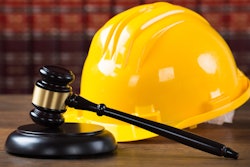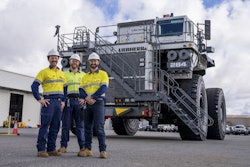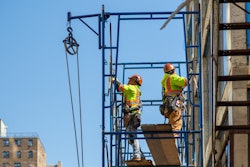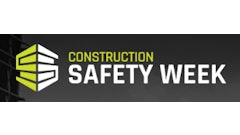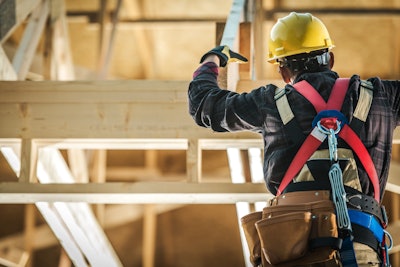
Supply chain disruptions are affecting the availability of building materials. Everything from insulation to plumbing fixtures to framing lumber is scarce. Not unknown before the pandemic, labor shortages in the construction industry only intensified with the COVID-19 virus. In addition, falling birth rates, a slowdown in legal immigration and early retirements have created a labor crisis. But demand for new homes is at an all-time high. So, how will these shortages and delays impact the quality of home construction?
The prevalence of construction defects in new housing often accompanies periods of high demand. When sources of trained labor dry up, builders must obtain workers from unconventional sources—sometimes from the parking lot at Home Depot. The same is true for building materials in short supply—substitutions or changes in accepted installation practices. In addition, builders substitute lower-quality materials for traditional building products. Each of these factors can negatively influence construction quality.
The most acknowledged result of shortages in materials and labor is the cost of new housing. Builders raise the price of new homes to compensate for the expense of hard-to-get materials and delays caused by the lack of labor. But there are other consequences—some of which may not be discovered until well after the sale of the home. Forensic investigations of new housing frequently expose the shortcuts taken during construction. These are quality-control issues often not visible on the exterior of a completed building. But reports of leaks or mold, for example, in a new home will trigger intrusive inspections that reveal poor construction methods.
Proper Construction and Installation is Important
Correctly applying many modern building materials requires reading and understanding of the manufacturer’s instructions and warnings. For example, waterproofing around windows must be integrated with the fins of the windows and the surrounding weather barrier to be waterproof. Manufacturers of these materials provide detailed installation instructions, which, if followed, will usually mean that a window will not leak. But sometimes, the workers who install these components are not trained in these precise building methods and “mis-lap” waterproofing materials. As a result, instead of shedding water to the outside, it is directed into the building.
Sealants used to waterproof windows must be compatible with the materials they touch. Unfortunately, some sealants are not compatible with adjacent materials, and instead of providing a watertight joint, they degrade the waterproofing. Other sealants are not compatible with materials used to “firestop” penetrations in walls. Sealants not compatible with the CPVC pipe used for sprinkler systems, for example, can degrade the pipe, which will eventually cause it to fail.
Today, it is popular to design balconies on residential buildings with supporting beams enclosed by a soffit. This looks good, but it can also trap moisture in the beams, which promotes rot. Water can enter the enclosed space when the joint where the balcony adjoins the building is not correctly waterproofed.
Quality Control on the Jobsite
Suppose this is known to the manufacturers of these products, and they publish guidelines for their materials, which are incorporated into drawings and specifications by project architects. Then why do we find defects in building construction? The answer is the level of training of the workers who must install these products is insufficient, and the on-site quality control is non-existent or sporadic. Labor sourced from a parking lot is likely not union trained. Construction labor unions have well-known training programs for apprentices that can turn out skilled workers in various trades. That training includes instruction on following the manufacturer’s guidelines and architectural details. But union-trained labor is avoided to reduce costs or is simply not available in sufficient numbers.
On-site quality control—inspections by architects, superintendents, or supervisors—can catch misapplications and mistakes in the field. But especially with production housing, there are simply too many locations of critical installations for architects or even supervisors to watch constantly. Even a tiny mistake—a joint where the sealant was not applied completely—can eventually cause internal damage. Watching over untrained workers constantly is impossible for supervisors, and architects are rarely on a site to observe the installation every day.
The high demand for production housing also tempts builders to try new designs that save time and expense. Direct Applied Finish Systems (DEFS) instead of stucco. Hardboard instead of real wood siding. Foam trim instead of wood or concrete. These systems are not of better quality than the products or systems they replace. But they cost less and take less time to install. Unfortunately, they are also frequently the subject of defect litigation.
Rising home prices may be the most immediate and obvious result of supply chain issues and labor shortages. Still, the impact will be most noticeable in the long-term, as shortcuts and mistakes made during construction subject portions of a building or home to moisture intrusion or degradation from incompatible materials. Trained, skilled labor is the best insurance against the mistakes that lead to construction defects and the litigation that will inevitably follow. But craftsmen simply are not available in sufficient numbers while we build homes and buildings at a furious pace not seen in many years.
Litigation over construction issues usually follows a hot real estate market by several years. We are just now getting to that point. It is unfortunate because the buyers of those properties will suffer the most from leaks, rot, and other failures. It is easy to say just provide more quality control, but inspectors cannot stand over a worker all day. City inspections are cursory, and municipalities cannot supply the number of inspectors it would take to avoid construction defects in new construction.
It is tempting to blame defects in construction on pandemic-related shortages, but poorly-trained labor and cost-cutting substitutions have been with us for decades and will always accompany high housing demand. Builders who try to meet that demand with solutions that do not include robust quality control and quality materials will find construction defect claims hard to avoid.





